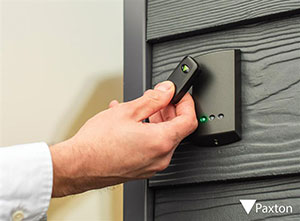
Paxton Introduces Net2 Checkpoint Control
Paxton’s longstanding access control system, Net2, receives its latest software update. The highly anticipated new feature, Checkpoint Control, supports COVID-secure sites. This additional functionality helps Net2 users protect employees and visitors by monitoring and approving people as they enter buildings.
Throughout the first half of 2020 the creation of Checkpoint Control was underway, along with the unforeseen global spread of the coronavirus COVID-19. During this time lockdown and social distancing restrictions in many countries heightened the need for the update to be rolled out globally, in a timely fashion. Since then Paxton’s Development team has worked tirelessly preparing the release alongside other vital COVID-secure Net2 updates.
“People are at the heart of everything we do and this year our focus is bringing people back to work safely,” said Jeremy Allison, senior product manager at Paxton. “Following on from the successful introduction of Occupancy Management, we are introducing Checkpoint Control. Designed to help businesses ensure their COVID-secure guidelines are being followed before staff enter a site.”
The Checkpoint Control functionality follows on from Paxton’s successful introduction of Net2 Occupancy Management and integration with thermal scanning hardware. Both were released for Net2 in July 2020. These features work simply and seamlessly together to reduce the risk of spreading COVID-19 around populated buildings.
“Net2 Checkpoint Control allows a site to assign temporary access levels to one or more users that will remain in place until they have either been manually validated or badged through a specific door,” Allison said. “This allows Net2 system administrators to ensure all staff and visitors pass through a designated checkpoint at a frequency that can be configured to suit the business requirements. It also offers the flexibility to split staff between multiple checkpoints to help maintain social distancing and not overrun an area.”